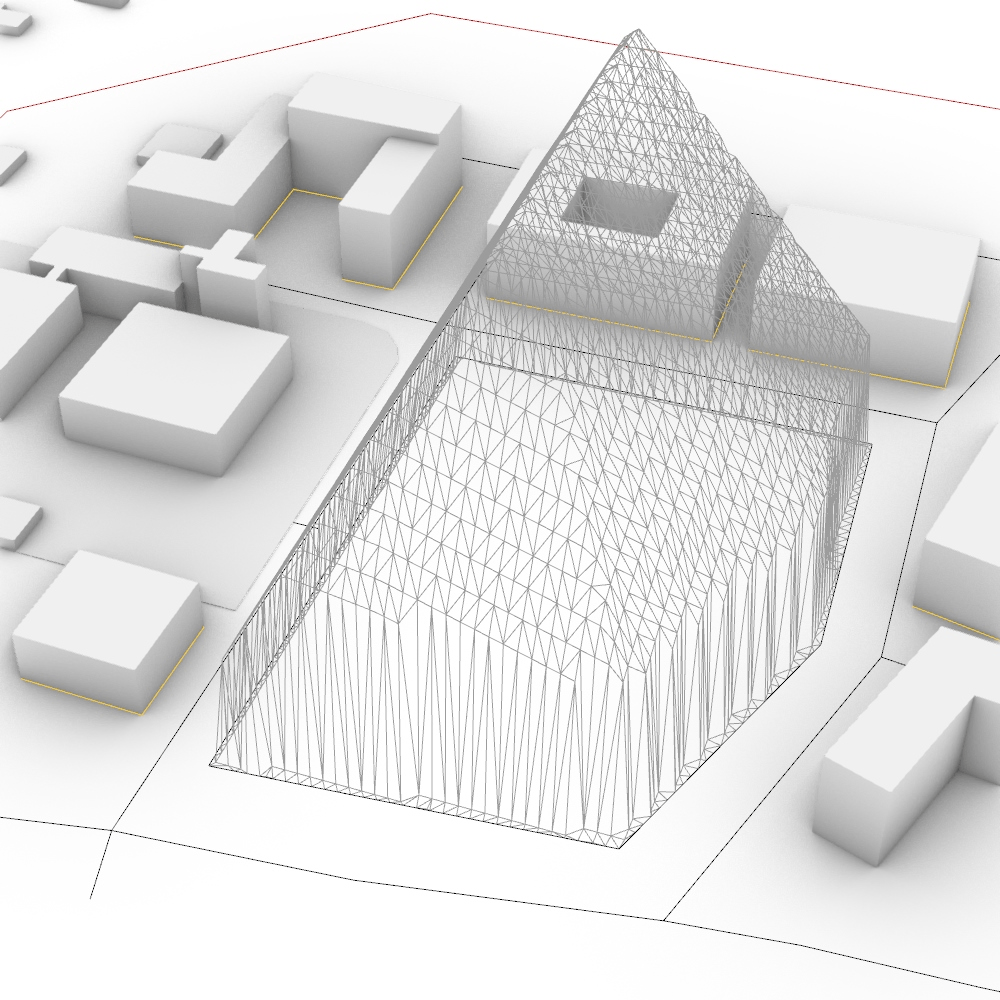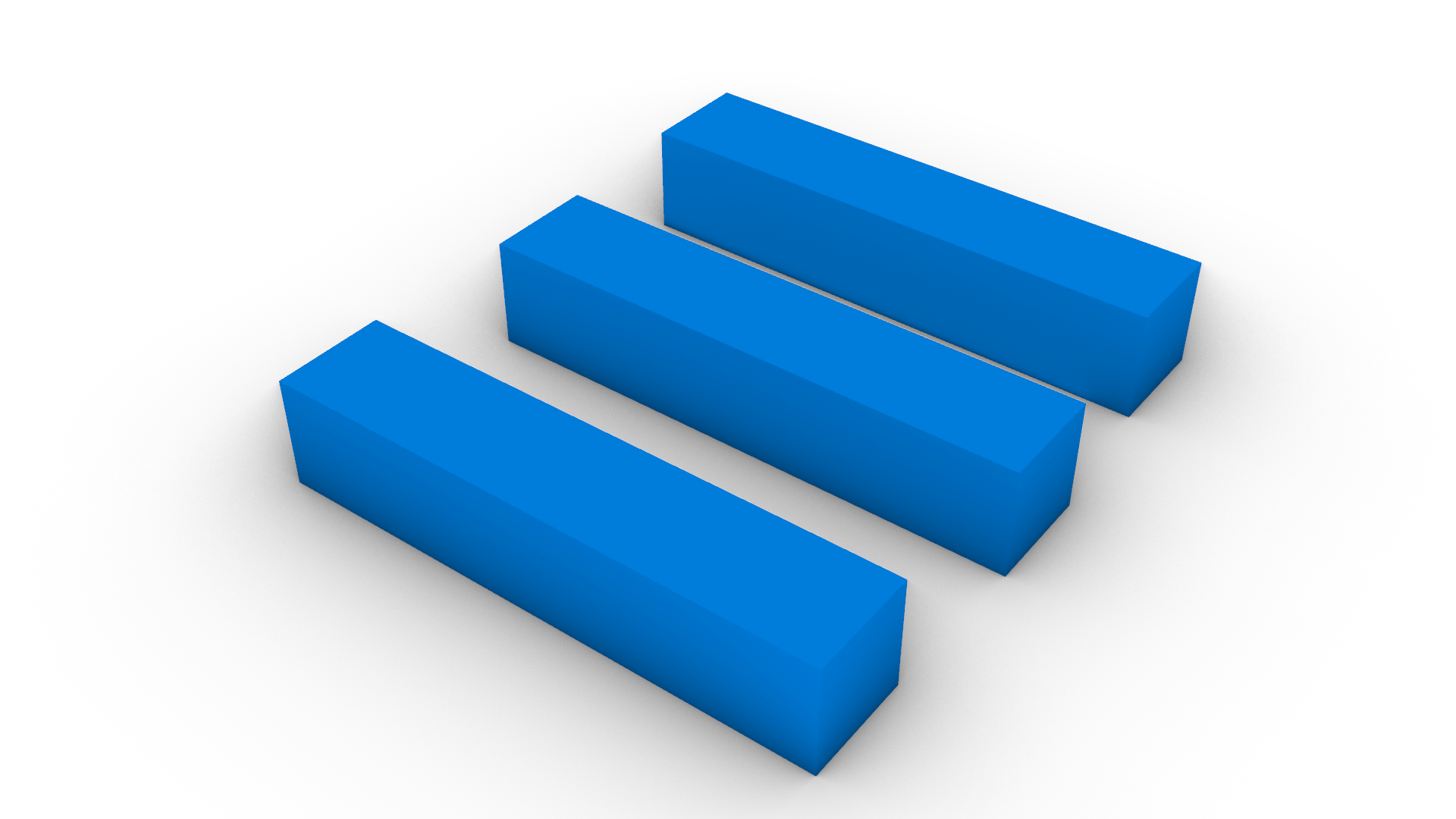The further explained grasshopper scripts on the building volumes generation are the output of the DigiWo reserach cooperation between the Bauhaus University Weimar, Decoding Spaces GbR and DIPLAN (today: REHUB digitale Planer). This research was supported by the ZukunftBau Program by the Federal Ministry of the Interior, Building, and Community.
In the following tutorial, you will get introduced to a set of User Objects & Components for the semi-automatic generation of residential multi-family buildings, enabling a user to generate either an urban block or a slab typology, as well as provide the scripts with a predefined sequence, that can generate variations with minimal guidance. The video below presents the concept of how the generation process is organized.
Project Team:
Iuliia Osintseva (Author), Reinhard König (Supervisor), Sven Schneider (Supervisor), Martin Bielik (Supervisor), Andreas Berst (Contributor), Egor Gavrilov (Student Assistant), Martin Oravec (Student Assistant)
If you prefer reading over watching – here is the paper on the block generation.
Topics covered in tutorial:
Block Generation Components
1a. Basic Block
1b. Actions:
- Delete Edges
- Setbacks
- Cornerbreaks
- Random Breaks
- Reduce Height
- Towers (& Envelopes)
- Yard Buildings
- Rooftops
Slab Generation Components
2a. Single Plot Generation
2b. Subdivision of Complex Concave Sites
2c. Multiple Plot Generation
Part 1:
Block Generation Components
1a. Basic setup.
In order to start the generation, the minimal requirement is a closed planar polyline in Rhino, representing the construction site. Additionally, you can add a layer with lines, representing the street axis, as well as the neighbor buildings context on a separate layer. Both those layers will then be considered during the generation.
It is as well required to select the location of the building area in order to derive the correct spacing (see the video above to learn about the spacing concept). Further, you can select multiple values for the building depth to try out, as well as set up a range of the floors count for the basic block. The output of this step is a closed block (or a range of those) around the construction plot perimeter, considering the required spacing based on the block height.
It is possible though, that the spacing should be neglected, in case that your construction plot is placed within existing blocks and thus you should continue the street profile, placing the buildings right along the plot edge. In this case, you can just draw the lines in Rhino to indicate where the spacing should not appear, and insert them into „Baulinie“ input.
The resulting generations are gathered at the „House Instance“ data type, which is a combination of six different parameters: plot after spacing; surfaces; outlines (façade lines towards the street); inlines (façade lines towards towards the inner yard); depth of a building (as a number), floor count (as a number). Using Surface and Floor Count you can display the geometry preview as well as calculate the basic performance indicators, such as FAR, Site Occupancy, or Total Built Area.
1b. Actions over the Block.

1b.1| DELETE EDGES
This action can delete one or multiple edges to reduce the density or to solve a too narrow concave block intersection. You can select the edge to start with and decide on the number of edges to delete.

1b.3| SETBACKS CORNERS
This action creates a setback at the corner if the length of the adjusting edges is sufficient and the setback does not cause an intersection. You can select the edge for generation, dimensions range for the setback parameters and a seed for the randomness.

1b.5| CORNERBREAKS
This action creates passageways in the block‘s corners, thus avoiding the creation of corners that are rather difficult for the later apartments placement. You can change the width of the passageways as well as the directions of the cuts.

1b.7| ENVELOPES
This action creates a spacing envelope, as well as both summer and winter solar envelopes (with the help of LadyBug tools). Informed by those envelopes, you can place buildings that act according to the local requirements, or that are placed to minimize the influence on the lighting conditions for the neighbor buildings around the given site.

1b.| YARD BUILDINGS
This action creates buildings within the block yard after the user-drawn axis. You can select the depth of the yard buildings as well as their floor count.

1b.2| SETBACKS EDGES
This action creates a setback along an edge if the edge length is sufficient. You can selecte the edge for generation, dimensions range for the setback parameters and a seed for the randomness.

1b.4 | RANDOM BREAKS
This action creates passageways through the block perimeter at either random, or user-driven spots. You can select the total amount of area to delete or the total width of the passageways, as well as the number of random options to try out per input block.

1b.6 | REDUCE HEIGHT
This action cuts the block through the corners and reduces the floor count of some of the building fragments. Here, you can indicate the total amount of area to delete. This actions creates several different height profiles per input block.

1b.8 | TOWERS
This action places one or two towers along the existing block perimeter in order to gain extra area. You can select the desired area per tower, restrict the extra floors, or assign a point where the tower should be located if you dont want random generations to appear. The limit of tower height is resulting from the envelopes script.

1b.10 | ROOFTOPS
This action creates offsetted rooftop floors over the block perimeter. You can decide on the orientation of the buildings (toward street/yard), depth, and their overall amount.
1c. Examplatory Generation Sequence
In the following video you‘ll find an examplatory combination of actions for generating a bunch of various building volumes for one construction site, including the parameters setting for each of the actions. Keep in mind that the suggested sequence is not the only possible one, and you can try to arrange actions in another way, and thus receive different results.
*please remember to unblock the .gha components before inserting them into your Libraries folder
Part 2:
Slabs Generation Components
2a. Single Plot Generation.
Here, the generation logic is slightly different than it was the case for the block typology. Whereas block was about offsetting and further modifying the site outline, slabs is about the pattern of the placement of several simple forms on the given site. Therefore, it is possible to order several slabs at one site. First, the site edges are translated into 4 characteristic edges based on the angles between them.
Further, slabs can appear along each of the edges – as long as the space is sufficient.
Depending on the selected order of the edges, the pattern of the slabs allocation can differ greatly.
Accordingly, each further parameter to influence the slabs pattern is repeated four times in order to allow different variations along each of the edges. In all further parameters, the order of the values will be applied accordingly to your selected order of the site edges. You can re-adjust the edges order at any later moment of the generation. Below, you can find a short video with the overview of the parameters that you can influence for the slabs typology.
2b. Subdivision of Complex Concave Sites and Multiple Plots Generation
In case of large area plots, such generation might cause monotonous strict patterns, non usable for modern urban plannings. In order to escape this, we developed a method on the subdivision of the big concave plots into smaller and simpler sub-fragments. Those sub-plots can then be filled with slabs in a single direction.
In the previous part, there were nine parameters for each slab raw at a single edge. In the case of generating slabs for multiple plots at the same time, the number of parameters gets multiplied accordingly. As follows, taking control over generation becomes exhausting. That is why for the multiple plots generation it was decided to leave only single-direction slabs. However, the user can decide between different orientation patterns as well as subdivision patterns himself, thus still exploring the design space to a several extent. In the following video you can see the brief overview of parameters to guide the generation for the slabs typology at multiple sites.









Thank you for the sharing, which is very interesting, but where can we download the Digiwo plugin for grasshopper? and the link for ‘download setuo files’ seems have a problem to open. looking forward to your reply
Hi Binchen! Thanks for your interest in this research! The DigiWo Plugin can be downloaded under the first video, linked to the “Download Component & User Objects”. However, its indeed not very comfortable to split downloads to different locations, so this was corrected. Please find the plugin as well as both setup and example definitions all gathered under the last link in this post.
Best regards
I have tried the Digiwo plugin for grasshopper. This is really interesting and definitely something similar to that of finch3D which will also be a plugin for GH. Also this looks similar to Testfit, which is even more Intriguing.
Is there any way to get the code could be made open source so that others can have a look and also if anyone want to contribute in the code they can also do the same. I am very much interested to have a look at the coding.
Where can I get the source code for this plugin? I would like to go through that
Hi Luliia,
From where we can download the DgiwoUtilities 2.0. After installing the above-provided plugin file, still, it is asking to install version 2.0
Thank you for sharing
Does the plug-ins work for Rhino 7, because i am unable to get any of the files work.
151 / 5000
Resultados de tradução
Hello, there is a plugin I couldn’t find to download, so I can’t see the definition. It’s Diplan IUliia.
Could you tell me where I can find it? Thanx
Hello, there is a plugin I couldn’t find to download, so I can’t see the definition. It’s Diplan IUliia.
Could you tell me where I can find it? Thanx
Hi, thanks for sharing, this looks very interesting. Just a question: does the DigiWo plugin only work for gh on Rhino 7? I’m trying to load it in RH6, I’ve unlocked the .gha component as usual, but I still get an error when opening it. Thanks!
Hi, Thank you for sharing
I’m facing a problem when loading the “block set up.gh” File
It says missing component “melt” & “unmelt” from “Diplan|Uliia” Plug-in.
Could you share that components too?
Hello, thank you for sharing this useful script. The script when loading is missing components like “melt /unmelt” from diplan IUliia. Could this component be shared? Is it also possible to share the source code of plugins? Thanks a lot!
Hi Samuel,
Did you find the missing plugin?
https://drive.google.com/drive/folders/1FvkXdQivHmDQEK3JpAxmLDuEqlGpY99p?usp=drive_link
It gives 404 not found
Hello developer,
I am a master student from Tsinghua University, I am now studying your Digiwo project. But I found the miss of the ‘DiplanIUliia’ and ‘DIPLANExtra’ plugin. Can you share these plugin with me?
Waiting for your reply. Thank you.
https://drive.google.com/drive/folders/1FvkXdQivHmDQEK3JpAxmLDuEqlGpY99p?usp=drive_link
Hello Iuliia,
I tried to use the plugin but I found it misses of the ‘DiplanIUliia’ and ‘DIPLANExtra’ plugins. Can you share these plugins with us?
Thank you.
https://drive.google.com/drive/folders/1FvkXdQivHmDQEK3JpAxmLDuEqlGpY99p?usp=drive_link
Great work! I used them last year. But, now unable to access google drive. Its a 404 error.
Dear Mr. Koenig.
Unfortunately the google Drive link is offline as of May 2024. Could you kindly reupload the files again, as it would be a shame if this toolset would be lost to time.
Best,
Lorin
ETH Zürich